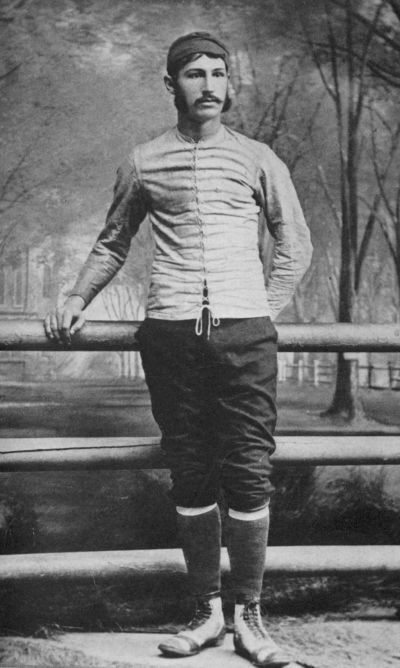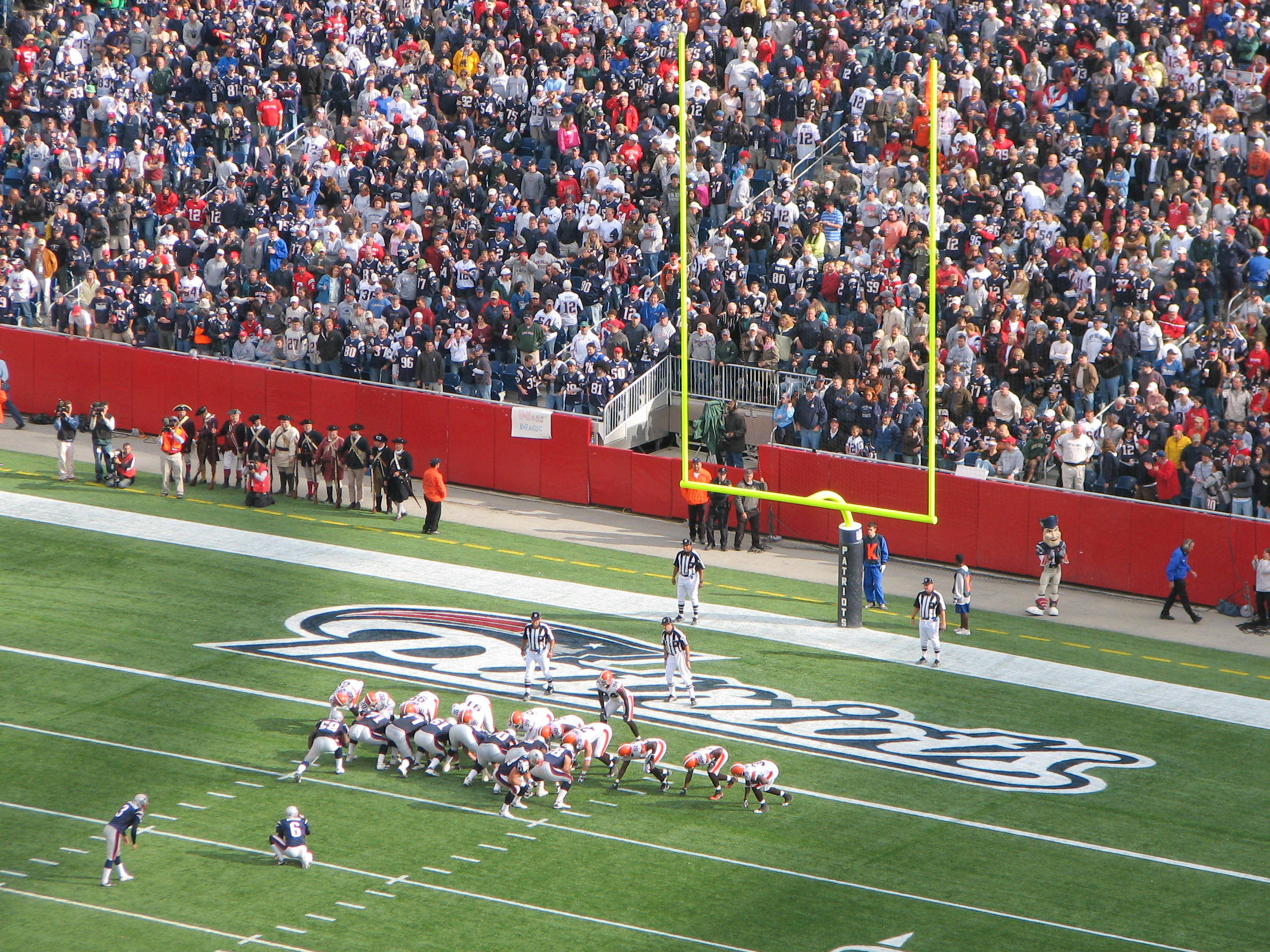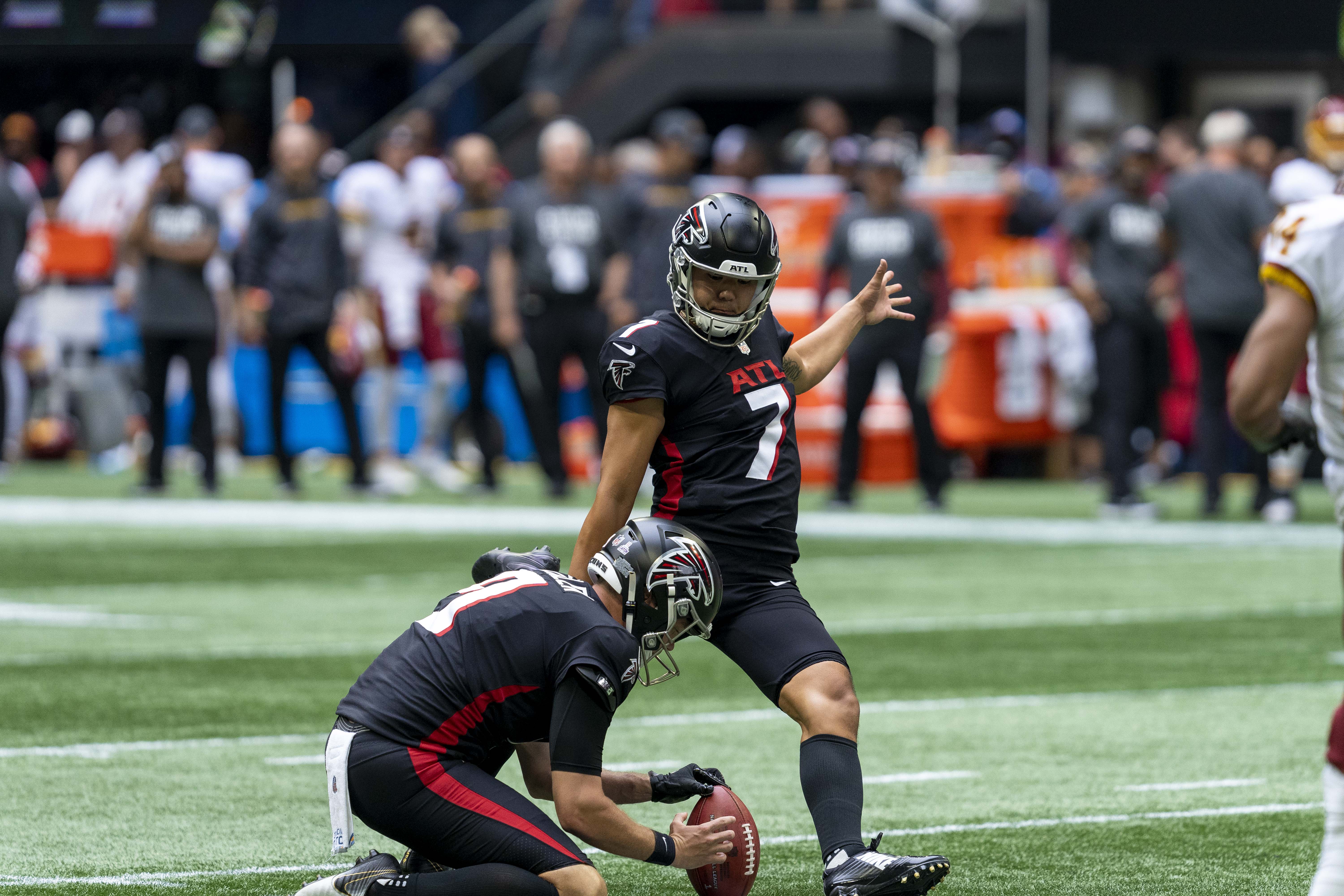|
1893 New Hampshire Football Team
The 1893 New Hampshire football team was an American football team that represented New Hampshire College of Agriculture and the Mechanic Arts during the 1893 college football season—the school became the University of New Hampshire in 1923. This was the first year that the college fielded a football team, which lost the only game it played. Schedule Scoring during this era awarded 4 points for a touchdown, 2 points for a conversion kick (extra point), and 5 points for a field goal. Teams played in the one-platoon system and the forward pass was not yet legal. Games were played in two halves rather than four quarters. ;Game summary * Date: November 4, 1893 * Game weather: Rain * Referee: G. L. Teeple of Durham * Umpire: C. S. Haley of Newmarket ;Scoring :First half * Newmarket – Mellows run (Mellows kick failed). NHC 0, Newmarket 4 :Second half * Newmarket – Griffin run (Mellows kick good). NHC 0, Newmarket 10 Time: 40 minutes NHC roster: Whittemore (C), Forr ... [...More Info...] [...Related Items...] OR: [Wikipedia] [Google] [Baidu] |
American Football
American football (referred to simply as football in the United States and Canada), also known as gridiron, is a team sport played by two teams of eleven players on a rectangular field with goalposts at each end. The offense, the team with possession of the oval-shaped football, attempts to advance down the field by running with the ball or passing it, while the defense, the team without possession of the ball, aims to stop the offense's advance and to take control of the ball for themselves. The offense must advance at least ten yards in four downs or plays; if they fail, they turn over the football to the defense, but if they succeed, they are given a new set of four downs to continue the drive. Points are scored primarily by advancing the ball into the opposing team's end zone for a touchdown or kicking the ball through the opponent's goalposts for a field goal. The team with the most points at the end of a game wins. American football evolved in the United States, ... [...More Info...] [...Related Items...] OR: [Wikipedia] [Google] [Baidu] |
New Hampshire College Of Agriculture And The Mechanic Arts
New Hampshire College of Agriculture and the Mechanic Arts (NHC) was founded and incorporated in 1866, as a land grant college in Hanover in connection with Dartmouth College. In 1893, NHC moved to Durham, where it became the University of New Hampshire (UNH) in 1923, by an act of the New Hampshire General Court. History The Morrill Act of 1862 granted federal lands to New Hampshire for the establishment of an agricultural-mechanical college. The state incorporated New Hampshire College in 1866 and opened the college in 1868 in Hanover. The institution was officially associated with Dartmouth College and was directed by Dartmouth's president. Durham resident Benjamin Thompson left his farm and assets to the state for the establishment of an agricultural college. On January 30, 1890, Thompson died and his will became public. On March 5, 1891, Governor Hiram A. Tuttle signed an act accepting the conditions of Thompson's will. On April 10, 1891, Tuttle signed a bill authorizing the ... [...More Info...] [...Related Items...] OR: [Wikipedia] [Google] [Baidu] |
1893 College Football Season
The 1893 college football season was the season of American football played among colleges and universities in the United States during the 1893–94 academic year. The 1893 Princeton Tigers football team, led by captain Thomas Trenchard, compiled a perfect 11–0 record, outscored opponents by a total of 270 to 14, and has been recognized as the national champion by the Billingsley Report, Helms Athletic Foundation, Houlgate System, and National Championship Foundation. Despite Yale's loss to Princeton, one selector ( Parke H. Davis) recognized the Bulldogs as the national champion. All eleven players selected by Caspar Whitney and Walter Camp to the 1893 All-America college football team came from the Big Three (Princeton, Yale, and Harvard). Seven of the honorees have been inducted into the College Football Hall of Fame: quarterback Philip King, fullback Charley Brewer (Harvard), end Frank Hinkey (Yale), tackle Marshall Newell (Harvard), tackle Langdon Lea (Princeton), gu ... [...More Info...] [...Related Items...] OR: [Wikipedia] [Google] [Baidu] |
University Of New Hampshire
The University of New Hampshire (UNH) is a public land-grant research university with its main campus in Durham, New Hampshire. It was founded and incorporated in 1866 as a land grant college in Hanover in connection with Dartmouth College, moved to Durham in 1893, and adopted its current name in 1923. The university's Durham campus comprises six colleges. A seventh college, the University of New Hampshire at Manchester, occupies the university's campus in Manchester. The University of New Hampshire School of Law is in Concord, the state's capital. The university is part of the University System of New Hampshire and is classified among "R1: Doctoral Universities – Very high research activity". , its combined campuses made UNH the largest state university system in the state of New Hampshire, with over 15,000 students. It was also the most expensive state-sponsored school in the United States for in-state students. History The Morrill Act of 1862 granted federal land ... [...More Info...] [...Related Items...] OR: [Wikipedia] [Google] [Baidu] |
Early History Of American Football
The early history of American football can be traced to early versions of rugby football and association football. Both games have their origin in varieties of football played in Britain in the mid–19th century, in which a football is kicked at a goal or run over a line, which in turn were based on the varieties of English public school football games. American football resulted from several major divergences from association football and rugby football, most notably the rule changes instituted by Walter Camp, a Yale University and Hopkins School graduate considered to be the "father of gridiron football". Among these important changes were the introduction of the line of scrimmage, of down-and-distance rules and of the legalization of interference. In the late nineteenth and early twentieth centuries, gameplay developments by college coaches such as Eddie Cochems, Amos Alonzo Stagg, Parke H. Davis, Knute Rockne, John Heisman, and Glenn "Pop" Warner helped take adva ... [...More Info...] [...Related Items...] OR: [Wikipedia] [Google] [Baidu] |
Touchdown
A touchdown (abbreviated as TD) is a scoring play in gridiron football. Whether running, passing, returning a kickoff or punt, or recovering a turnover, a team scores a touchdown by advancing the ball into the opponent's end zone. In American football, a touchdown is worth six points and is followed by an extra point or two-point conversion attempt. Description To score a touchdown, one team must take the football into the opposite end zone. In all gridiron codes, the touchdown is scored the instant the ball touches or "breaks" the plane of the front of the goal line (that is, if any part of the ball is in the space on, above, or across the goal line) while in the possession of a player whose team is trying to score in that end zone. This particular requirement of the touchdown differs from other sports in which points are scored by moving a ball or equivalent object into a goal where the whole of the relevant object must cross the whole of the goal line for a score to be a ... [...More Info...] [...Related Items...] OR: [Wikipedia] [Google] [Baidu] |
Conversion (gridiron Football)
The conversion, try (American football, also known as a point(s) after touchdown, PAT, or (depending on the number of points) extra point/2-point conversion), or convert (Canadian football) occurs immediately after a touchdown during which the scoring team is allowed to attempt to score one extra point by kicking the ball through the uprights in the manner of a field goal, or two points by bringing the ball into the end zone in the manner of a touchdown. Attempts at a try or convert are scrimmage plays, with the ball initially placed at any point between the hash marks, at the option of the team making the attempt. The yard line that attempts are made from depends on the league and the type of try or convert being attempted. If the try or convert is scored by kicking the ball through the uprights, the team gets an additional one point for their touchdown, bringing their total for that score from six points to seven. If two points are needed or desired, a two-point conversion may ... [...More Info...] [...Related Items...] OR: [Wikipedia] [Google] [Baidu] |
Field Goal
A field goal (FG) is a means of scoring in gridiron football. To score a field goal, the team in possession of the ball must place kick, or drop kick, the ball through the goal, i.e., between the uprights and over the crossbar. The entire ball must pass through the vertical plane of the goal, which is the area above the crossbar and between the uprights or, if above the uprights, between their outside edges. American football requires that a field goal must only come during a play from scrimmage (except in the case of a fair catch kick) while Canadian football retains open field kicks and thus field goals may be scored at any time from anywhere on the field and by any player. The vast majority of field goals, in both codes, are place kicked. Drop kicked field goals were common in the early days of gridiron football but are almost never done in modern times. In most leagues, a successful field goal awards three points (a notable exception is six-man football in which, due to t ... [...More Info...] [...Related Items...] OR: [Wikipedia] [Google] [Baidu] |
One-platoon System
The one-platoon system, also known as iron man football, is a platoon system in American football where players play on both offense and defense. It was the result of smaller roster sizes in the early days of the game and rules that limited player substitutions, rules that are also standard procedure in many other sports but were eliminated in the 1940s as free substitution was legalized. The alternative system is the two-platoon system (or simply the ''platoon system''), which uses separate offensive and defensive units (three platoons if special teams is also counted). Each system was used at different times in American college football and in the National Football League. One-platoon football is seen in modern times mostly on lower-end and smaller teams at the high school and semi-pro levels, where player shortages and talent disparities require it; the system allows teams to play with a smaller roster than a two-platoon or multiple-platoon team, but because players are on the f ... [...More Info...] [...Related Items...] OR: [Wikipedia] [Google] [Baidu] |
Forward Pass
In several forms of football, a forward pass is the throwing of the ball in the direction in which the offensive team is trying to move, towards the defensive team's goal line. The forward pass is one of the main distinguishers between gridiron football (American football and Canadian football) in which the play is legal and widespread, and rugby football (union and league) from which the North American games evolved, in which the play is illegal. The development of the forward pass in American football shows how the game has evolved from its rugby roots into the distinctive game it is today. Illegal and experimental forward passes had been attempted as early as 1876, but the first legal forward pass in American football took place in 1906, after a change in rules. Another change in rules occurred on January 18, 1951, which established that no center, tackle, or guard could receive a forward pass, unless such a player announces his intent to the referee beforehand that he will ... [...More Info...] [...Related Items...] OR: [Wikipedia] [Google] [Baidu] |
Wayback Machine
The Wayback Machine is a digital archive of the World Wide Web founded by the Internet Archive, a nonprofit based in San Francisco, California. Created in 1996 and launched to the public in 2001, it allows the user to go "back in time" and see how websites looked in the past. Its founders, Brewster Kahle and Bruce Gilliat, developed the Wayback Machine to provide "universal access to all knowledge" by preserving archived copies of defunct web pages. Launched on May 10, 1996, the Wayback Machine had more than 38.2 million records at the end of 2009. , the Wayback Machine had saved more than 760 billion web pages. More than 350 million web pages are added daily. History The Wayback Machine began archiving cached web pages in 1996. One of the earliest known pages was saved on May 10, 1996, at 2:08p.m. Internet Archive founders Brewster Kahle and Bruce Gilliat launched the Wayback Machine in San Francisco, California, in October 2001, primarily to address the problem of web co ... [...More Info...] [...Related Items...] OR: [Wikipedia] [Google] [Baidu] |
College Football Data Warehouse
College Football Data Warehouse is an American college football statistics website that was established in 2000. The site compiled the yearly team records, game-by-game results, championships, and statistics of college football teams, conferences, and head coaches at the NCAA Division I FBS and Division I FCS levels, as well as those of some NCAA Division II, NCAA Division III, NAIA, NJCAA, and discontinued programs. The site listed as its references annual editions of ''Spalding's Official Football Guide'', '' Street and Smith's Football Yearbooks'', NCAA, NAIA, and NJCAA record books and guides, and historical college football texts. College Football Data Warehouse was administered by Tex Noel and David DeLassus.College Football Data Warehouse , retrieved August 19, 2010. Noel (which is a |

.jpg)





